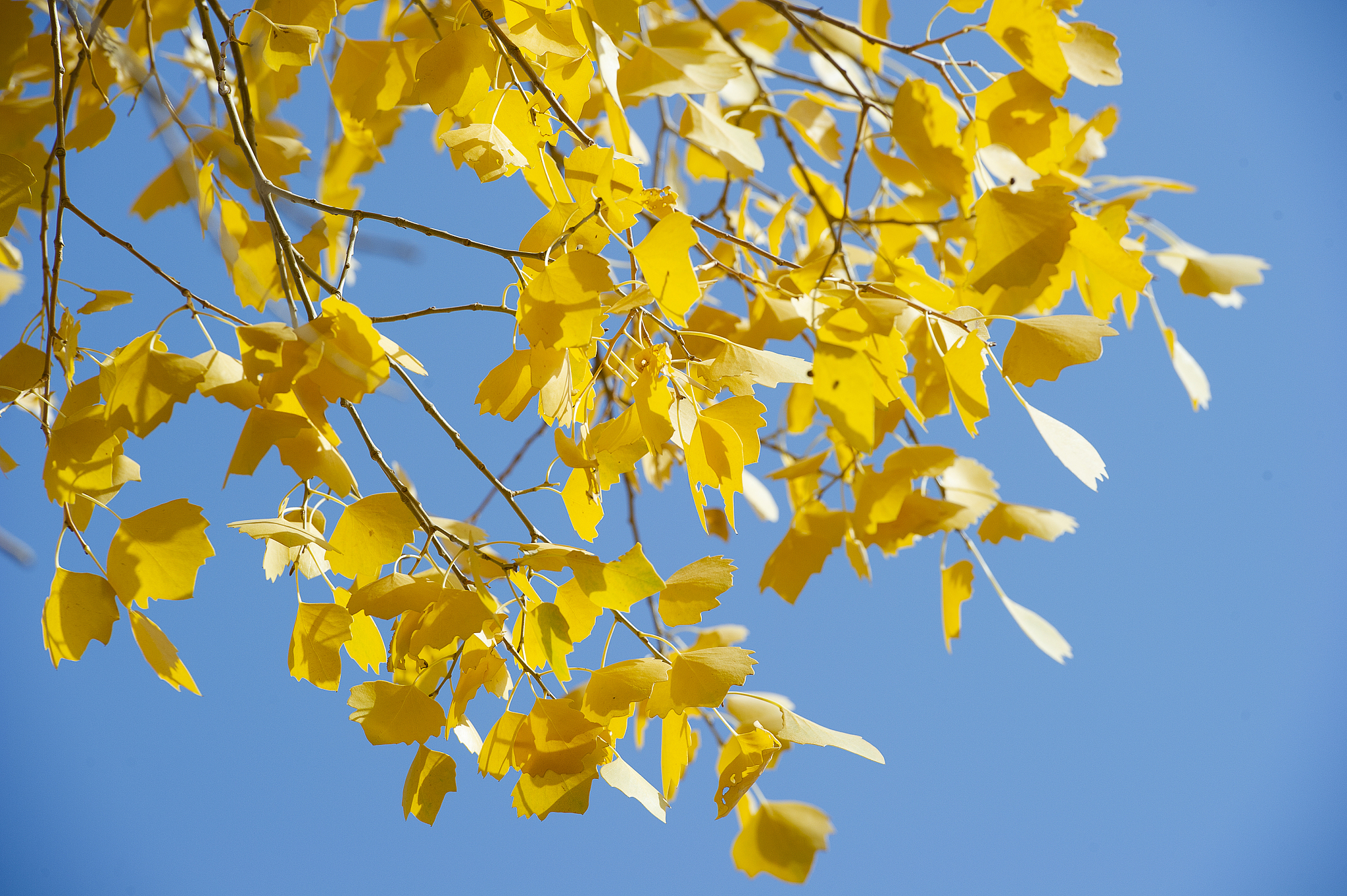Plants came to Earth 65 million years earlier than humans. They lay foundations for all life to breed on this planet. China's home to more than 30,000 plant species. From floating water plants in the sea to standing rheum nobile high up the snow mountain, plants lead their own unique lives at different altitudes.
Desert Poplar (0-1,000m)
Around 60 million years ago, along with the upheaval of the Qinghai-Tibet plateau, desert poplars have resided near the Tarim River in northwest China's Xinjiang Uygur Autonomous Region. Now, the Tarim basin is the world's major habitat for natural desert poplars, accounting for 90 percent of their total area in China.
In the arid desert, the plant has an amazing root network that can stretch for meters underground to absorb water. It can also withstand salt by shedding "tears" that contains salt.
China's Flora Tour: Euphrates poplar – king of the desert

Lotus (1,000-1,500m)
Native to China, lotus is loved by poets throughout history and is regarded as a symbol of elegance. Though growing in muddy wetland, the leaves and flowers are pretty clean. The seed of lotus can still sprout and flower after thousands of years.
More surprisingly, a pair of lotus flowers can grow from the same stalk, named double lotus or Bingdi lotus. The lotus is not artificially bred but completely natural and the chance of its appearance is about one in 100,000.
China's Flora Tour: Why do Chinese people love lotus?
Banyan (1,500-2,000m)
Talking of the size, banyan can be the king of the rainforest. One banyan tree can grow numerous aerial roots to support its huge body. The largest canopy of banyan in southwest China's Yunnan Province occupies a land area of 5,000 square meters, turning one tree into a small forest.
China's Flora Tour: The silent battle in Hainan's rainforest
Dove Tree (2,000-3,000m)
During the Quaternary glaciation, the dove tree disappeared from most regions of China, but some survived in central China. Every April, the dove tree embraces its blooming time. The white bracts that resemble a flying dove are often mistaken as its flower. The real flower is actually hidden in the bracts.
China's Flora Tour: The dove tree that survived the ice age
Farges' Fir (3,000-3,500m)
The competition for Farges' fir is fierce. There is only one in a million chance to survive from seed to sprout. Endemic to China, Farges' fir can be found in coniferous forests in Henan, Hubei, Sichuan, Shaanxi and Gansu Provinces.
CGTN Nature: Shennongjia Series | Episode 2: Watchmen of the Mountains
Rhododendron Wardii (3,500-4,000m)
Shangri-la region in southwest China's Yunnan Province is home to over 300 rhododendron species, accounting for a half of the world's total. The yellow rhododendron wardii was found and named by the renowned English botanist Frank Kingdon-Ward. He, as a plant hunter, have brought hundreds of plant specimens back to his country.
China's Flora Tour: A plant hunter took from Shangri-La
Meconopsis (4,000-4,500m)
Himalayan poppies or flowers under the genus of Meconopsis are stars on the plateau. In the world, around 80 percent of meconopsis species are found on the meadows and alpine scree slopes in China. The flower blooms once in a lifetime after several years.
China's Flora Tour: Touch the sky, the colorful poppy in the Himalayas
China's Flora Tour: Why flowers on plateaus are often blue?
Noble Rhubarb (4,500-5,000m)
Resembling a pagoda on the frigid alpine scree slope, the towering noble rhubarb is quite distinctive from its surrounding. Before it grows into a 1.5 to 2 meter-tall giant, the noble rhubarb creeps on the ground for several years to accumulate energy.
The pale yellow bracts are its leaves and protect it from the cold weather and ultraviolet rays on the plateau.
China's Flora Tour: Floral survival on the plateau
Scan the QR code below with your phone to embark on a plant journey. After entering this amazing plant kingdom, click every water droplet and press the button to see plants above. At the end, you can shake for your 2020 lucky plant!
(Cover image is designed by CGTN's Jia Jieqiong.)
(If you want to contribute and have specific expertise, please contact us at nature@cgtn.com.)